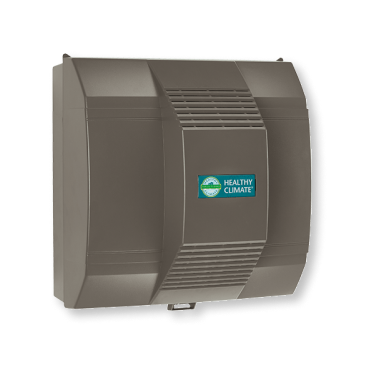Your home in Queen Creek, AZ, might struggle without a whole-home humidifier during the winter when your furnace is in use. Our Arizona air is always dry, but humidifiers are especially useful during the colder seasons when your heating system saps moisture from the air. If you’re struggling with dry indoor air, a humidifier installed by Hicken Air can help.
Whole House Humidifiers in Queen Creek, AZ
Reme Halo Air Purifier

Queen Creek Home Humidifier Team
Dry air can be very uncomfortable. You might notice problems like dry skin, a sore throat, or a nagging cough. If you have asthma or allergies, you may struggle to breathe more than usual. Some homeowners find that adding a whole-house humidifier to their HVAC system helps alleviate these issues. Various types of whole-home humidifiers are available, and while they all increase humidity levels, they operate differently.
One type is the bypass humidifier. It uses airflow from your furnace to evaporate water. Install this unit on an air-return duct. It pulls warm air from the ductwork and blows it over a water panel, causing evaporation. Then, it spreads the moisture throughout your home. The bypass humidifier relies on your HVAC system’s blower fan to operate effectively.
A power humidifier works similarly to a bypass humidifier, but it has its own fan. This fan accelerates evaporation, and the humid air travels through the ductwork into your home. However, the furnace still needs to operate because the humidifier fan cannot move air independently. Another option is the steam humidifier, which has a tank of water that boils to produce steam. The steam travels through the ductwork, adding moisture to your home.
We install a whole-house humidifier directly onto your home’s HVAC system, either on the supply or return ductwork near the furnace. This placement allows moisture to distribute evenly throughout each room. The humidifier connects to your home’s water supply and uses the HVAC system’s airflow to regulate humidity levels, improving indoor comfort and air quality.
- Better indoor air quality
- Keeps wood from drying out
- Reduces allergy symptoms
- Better energy efficiency

Our Whole-Home Humidifiers Service
Hicken Air professionally installs whole-home humidifiers in Queen Creek. Our family-owned HVAC company has been providing reliable solutions since 2009, and we stand behind everything we do. That’s why we offer a 30-day labor guarantee alongside manufacturer warranties. Our Queen Creek HVAC technicians have the knowledge and experience to deliver the results you need. Take advantage of our online promotions and financing options available for approved credit for installations.
Experience the comfort of a home humidifier! Contact Hicken Air today to learn about whole-home humidifiers in Queen Creek.
